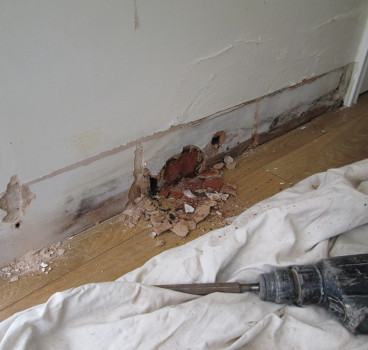Office interiors - first impressions count
There is no doubting the fact that first impressions count. Our first impressions are generated by an experience and our surrounding environment. This can all happen in the blink of an eye. Office receptions are a prime example of where first impressions count. We walk into a building and get an impression of the organisation we are going to see. So, what makes a good reception and how are they changing the way in which we interact as buildings evolve?
Last week the British Council for Offices (BCO) launched a new report entitled ‘first impressions – the evolution of office receptions and hospitality services and what it means for the office industry'. The report looks at how the office reception has evolved and is now an integral part of modern office design, and makes us consider exactly what the function of a good office reception is.
In the past, the reception was largely regarded as the place where staff and visitors arrived. It was a functional space. Things have changed. Arriving is now an experience and it's not just offices - think of how checking-in at an airport, a restaurant or hotel has changed. It is no longer a functional space, but a space that influences how you are feeling and what you think of a particular company or brand.
The BCO report identifies that modern office space is changing – fewer people sit at a desk and there is more emphasis on giving staff and visitors a choice of working and meeting environments. In the same way, the reception has evolved. Property developer Sir Stuart Lipton, founder of Stanhope plc, likens the reception to the town square with a sense of civic identity and communities surrounding it in ‘vertical villages'.
The report looks into three different typologies: - office developments in single occupancy; office developments with multiple occupancy and serviced offices/co-working. Including case studies from across the three different types, the qualitative and quantitative approach has led to some interesting discoveries and conclusions.
One shining example of how office receptions have evolved is the White Collar Factory. Located near Old Street, it is a brave and bold iteration of architects Allford Hall Monaghan Morris (AHMM) five-year research project for developer Derwent London. In creating the 16-storey building, Derwent London launched a competition to design the ‘future reception'. The winning scheme by Studio Seilern dissolved the reception into a free accessible garden space where the access to the office turns into a butterfly enclosure and the garden is the receptionist. In doing this, they have taken the office reception and turned it into a social space that is an extension of the public realm. Now, this is just a future vision, rather than a reality, but it shows where we are heading – gone are the days of polished marble and Le Corbusier armchairs, in are spaces that create surprise and intrigue whilst being accessible, flexible and multi-functional.
Other areas that the report lookED at were issues around delivery and storage such as the inclusion of Amazon lockers, the inclusion of cafés and restaurants, shared meeting spaces, retail, pop-up shops, exhibition and event spaces, bike storage and libraries.
The report observed three models of office reception – the inclusive model where the reception area is open to the public; the sheltered inclusive that controls external access and only allows employees and visitors in, and the exclusive model where the security line is outside of the building and where visitors and employees are spatially separated. It is also interesting to note that from the case studies, two design strategies were identified – linear and immersive. Linear is the more traditional approach where there is a reception and visitors enter off the street and check-in, wait in a seating area before proceeding to the main workspace for a meeting. However, many of the new office buildings are featuring immersive receptions where visitors can mingle with staff in an informal setting. This approach creates a buzz and a sense of activity which heightens the impact of the building and therefore influences our first impression.
That's not to say the traditional linear reception offers a bad first impression, but it is one we are more accustomed to and as such expecting. The immersive reception is one of experience and as such leaves a longer impression. In a fast-paced, ever-changing world, something that leaves a lasting impression on us can have a profound effect. So, next time you visit an office, take a look around and ask yourself, what does this reception say about this company and what's my first impression?
By Steven Argent, Construction Director at QOB Group
Additional Blogs

Why most BIM Models are not actually that useful
For more than a decade, Building Information Modelling has been celebrated as the future of coordinated design, efficient delivery and data-driven asset management. In theory, BIM promises seamless...
Read moreHow construction can cut Its carbon footprint by caring for soil
Soil is often dismissed as mere dirt, but it is one of the planet’s most powerful carbon stores, holding more than all of the world’s forests combined. Yet in our rush to build, pave and develop, we...
Read more

What is bridging damp? How it happens and how to fix it
Bridging damp happens when moisture finds a path around the building’s damp-proof course (DPC) so it reaches your internal walls and skirting. If you see damp patches rising above the skirting or...
Read more